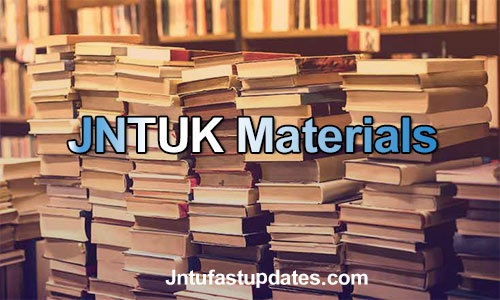JNTUK R20 2-2 Electronic Circuit Analysis Material/Notes PDF Download
Students those who are studying JNTUK R20 ECE Branch, Can Download Unit wise R20 2-2 Electronic Circuit Analysis (ECA) Material/Notes PDFs below.

JNTUK R20 2-2 Electronic Circuit Analysis Material/Notes PDF Download
OBJECTIVES:
- To learn hybrid-pi parameters at high frequency and compare with low frequency parameters.
- Learn and understand the purpose of cascading of single stage amplifiers and derive the overall voltagegain.
- Analyze the effect of negative feedback on amplifier characteristics and derive the characteristics.
- Learn and understand the basic principle of oscillator circuits and perform the analysis of different oscillatorcircuits.
- Compare and analyze different Power amplifiers like Class A, Class B, Class C, Class AB and other types ofamplifiers.
- Analyze different types of tuned amplifiercircuits.
UNIT-1
Small Signal High Frequency Transistor Amplifier models: BJT: Transistor at high frequencies, Hybrid- π common emitter transistor model, Hybrid π conductance, Hybrid π capacitances, validity of hybrid π model, determination of highfrequency parameters in terms of low-frequency parameters , CE short circuit current gain, current gain with resistive load, cut-off frequencies, frequency response and gain bandwidth product.
FET: Analysis of common Source and common drain Amplifier circuits at high frequencies.
Download UNIT-1 Material PDF | Reference-2
UNIT-2
Multistage Amplifiers: Classification of amplifiers, methods of coupling, cascaded transistor amplifier and its analysis, analysis of two stage RC coupled amplifier, high input resistance transistor amplifier circuits and their analysis-Darlington pair amplifier, Cascode amplifier, Boot-strap emitter follower, Differential amplifier using BJT.
Download UNIT-2 Material PDF | Reference-2
UNIT-3
Feedback Amplifiers: Feedback principle and concept, types of feedback, classification of amplifiers, feedback topologies, Characteristics of negative feedback amplifiers, Generalized analysis of feedback amplifiers, Performance comparison of feedback amplifiers, Method of analysis of feedback amplifiers.
Download UNIT-3 Material PDF | Reference-2
Unit-4
Oscillators: Oscillator principle, condition for oscillations, types of oscillators, RC-phase shift and Wien bridge oscillators with BJT and FET and their analysis, Generalized analysis of LC Oscillators, Hartley and Colpitt’s oscillators using BJT, Frequency and amplitude stability of oscillators.
Download UNIT-4 Material PDF | Reference-2
UNIT-5
Power Amplifiers: Classification of amplifiers(A to H), Class A power Amplifiers, Class B Push-pull amplifiers, Complementary symmetry push pull amplifier, Class AB power amplifier, Class-C power amplifier, Thermal stability and Heatsinks.
Tuned Amplifiers: Introduction, Q-Factor, small signal tuned amplifier, capacitance single tuned amplifier, double tuned amplifiers, , staggered tunedamplifiers
Download UNIT-5 Material PDF | Reference-2
TEXT BOOKS:
- Integrated Electronics- J. Millman and C.C. Halkias, Tata McGraw-Hill,1972.
- Electronic Devices and Circuits Theory – Robert L. Boylestad and LouisNashelsky, Pearson/Prentice Hall, Tenth Edition,2009.
- Electronic Devices and Integrated Circuits – B.P. Singh,Rekha , Pearson publications, 2006
REFERENCE BOOKS:
- Electronic Circuit Analysis and Design – Donald A. Neaman, McGrawHill,2010.
- Microelectronic Circuits-Sedra A.S. and K.C. Smith, Oxford University Press,Sixth Edition,2011.
- Electronic Circuit Analysis-B.V.Rao, K.R.Rajeswari, P.C.R.Pantulu,K.B.R.Murthy, PearsonPublications.
OUTCOMES:
- Design and analysis ofsmall signal high frequency transistor amplifier using BJT and FET.
- Designandanalysisofmultistageamplifiersusing BJTandFETandDifferential amplifier using BJT.
- Derive the expressions for frequency ofoscillation and condition for oscillation of RC and LC oscillators and their amplitude and frequency stabilityconcept.
- Know the classification of the power and tuned amplifiers and their analysiswith performance comparison.

320-x100(1).gif)



